 2020/9/14 0:00:00
2020/9/14 0:00:00 2367
2367
On September 14, 2020, the 5th Hydrogen Energy and Fuel Cell Conference was grandly held at the Shanghai Automobile Convention and Exhibition Center. The conference includes a 1-day plenary session and 4 professional sub-forums. The two sub-forums on September 14 are the application and promotion of fuel cell technology in the field of commercial vehicles (sub-venue 1) and the redefinition of future-oriented automotive hydrogen energy supply. System (Breakroom 2).

Tongji University professor Zhang Tong presided over the meeting
The theme of Session 1 is the application and promotion of fuel cell technology in the field of commercial vehicles. The theme focuses on the typical application scenarios, demonstration application practices, technological development progress, challenges and obstacles of fuel cell technology in the field of commercial vehicles, and explores the application of fuel cell technology in commercial vehicles. The best path for application and promotion in the vehicle field, build a perfect hydrogen economy application environment, and promote the rapid development of fuel cell commercial vehicles.
Below is an overview of the guest presentations:
Vision and Actions for Japan's Hydrogen Economy

Toshiyuki Shirai, Director of Advanced Energy Systems Division, Natural Resources and Energy Bureau, Ministry of Economy, Trade and Industry, Japan
Mr. Toshiyuki Shirai first introduced Japan's hydrogen energy policy and related actions. Currently, the cost of hydrogen energy in Japan is about US$1 per cubic meter. Japan hopes to reduce this cost by one-third.
In addition, Japan has also established a series of goals, especially for hydrogen energy and fuel cells. In Mr. Shirai Toshiyuki's view, the most important point of the hydrogen energy strategy is to reduce the cost of hydrogen energy and to further expand the use of hydrogen energy.
Application potential of fuel cell technology in the field of medium and heavy commercial vehicles
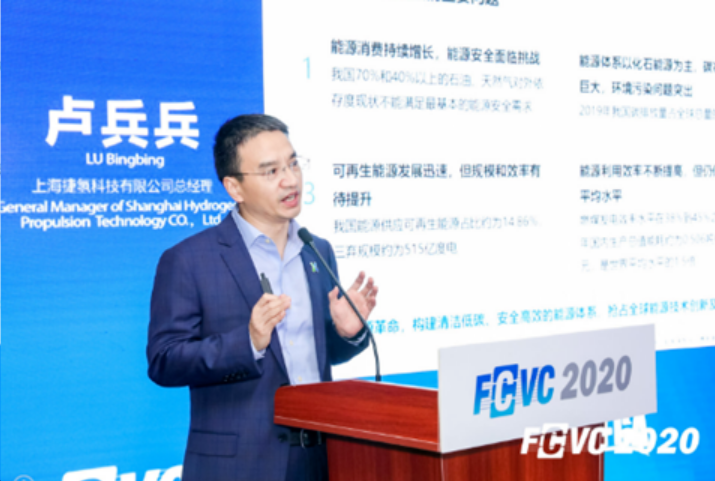
Lu Bingbing, General Manager of Shanghai Jie Hydrogen Technology Co., Ltd.
Mr. Lu Bingbing mainly expounded the necessity of replacing oil with hydrogen, the current economic situation of fuel cell heavy trucks and the advantages of JieHydrogen's products and services.
Mr. Lu Bingbing believes that fuel cells are technically not infeasible. Apart from the hydrogen refueling station, the biggest obstacle now is the cost. Both fuel cells and hydrogen need to continuously reduce costs.
As a fuel cell supplier, Mr. Lu Bingbing said that there are four aspects to reduce the cost of JieHydrogen: first, technology, and then breakthroughs in process technology materials, localization, coordination of the entire upstream and downstream of the industrial park, and legal compliance with regulations.
Demonstration and application of fuel cell buses in China and practical challenges
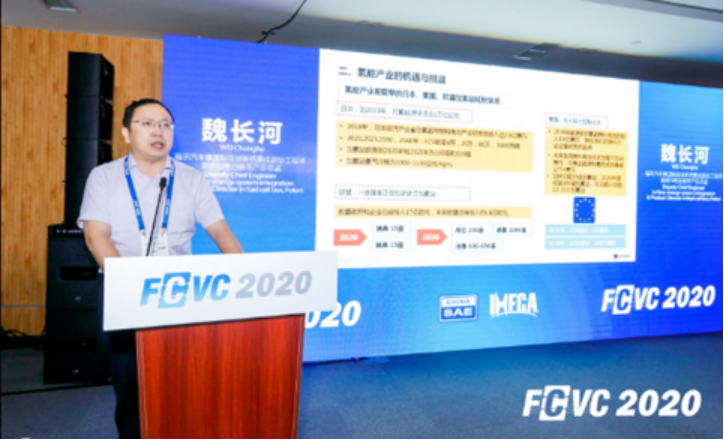
Wei Changhe, Deputy Chief Engineer of New Energy System Integration and Product Director of Fuel Cell Bus, Foton Motor Group
Mr. Wei Changhe believes that renewable energy in the third energy revolution, especially renewable energy led by hydrogen energy, will become an important part of the third energy revolution.
According to Mr. Wei Changhe's forecast, in 2050, the annual demand for hydrogen will increase by more than 10 times, and the global demand for hydrogen energy in terminal energy may exceed 18%, which is close to one-fifth. In 2050, almost 5 million fuel cell buses will gradually enter the market.
Fuel cell medium and heavy-duty vehicle deployment planning and technology development route vision map

Cristiano FACANHA, Global Director, Zero Emissions Program, Calstart, USA
Mr. CristianoFACANHA concluded that California has created an ecosystem that uses complementary and coordinated regulations to incentivize action and investment, while California is also investing in zero-emission technologies, with a focus on medium and heavy-duty vehicles. Based on the stall-grabbing strategy, California is also doing its best to apply these technologies to achieve the goal of reducing greenhouse gas emissions.
Discussion on Application of Hydrogen Fuel Cell System Based on Public Transport Condition
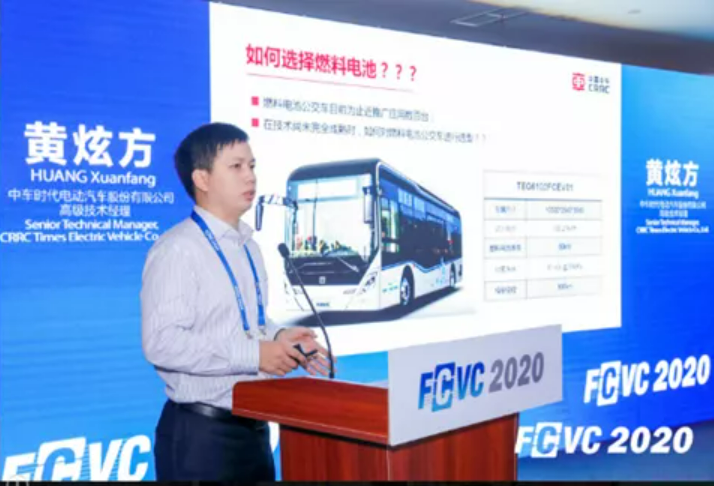
Huang Xuanfang, Senior Technical Manager, CRRC Times Electric Vehicle Co., Ltd.
Mr. Huang Xuanfang mainly expounded the current status of the fuel cell industry, the application requirements of CRRC fuel cells in public transportation conditions, and the exploration of CRRC in the field of fuel cells.
Mr. Huang Xuanfang said that the factors considered by CRRC in fuel cell buses include safety, electrical safety (improving insulation), collision safety, reliability of fuel cells, and anti-vibration.
Quality Assurance Development-Talking about the Test and Evaluation of Fuel Cell Vehicles
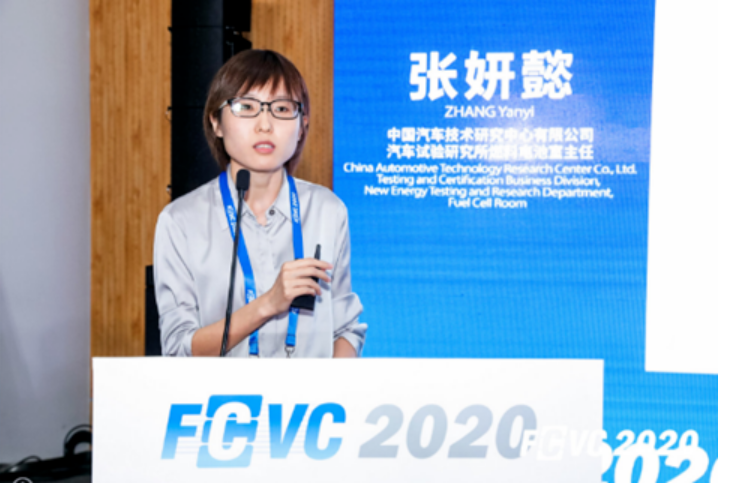
Zhang Yanyi, Director of the Fuel Cell Room of China Automotive Technology and Research Center Co., Ltd.
Ms. Zhang Yanyi talked about the consideration of the quality development of fuel cell commercial vehicles from the perspective of China Automotive Technology and Research Center.
In Ms. Zhang Yanyi's view, the first prerequisite for ensuring healthy development is standards. At present, the standards for fuel cell vehicles are still in their infancy, and the standards for complete vehicles and system components are all in the process of formulation.
At the same time, Ms. Zhang Yanyi said that from the analysis of their team, the most concerned about commercial vehicles may be three aspects: the first is safety, the second is energy saving, and the third is durability.
Exploration and practice of large-scale application of fuel cell commercial vehicles
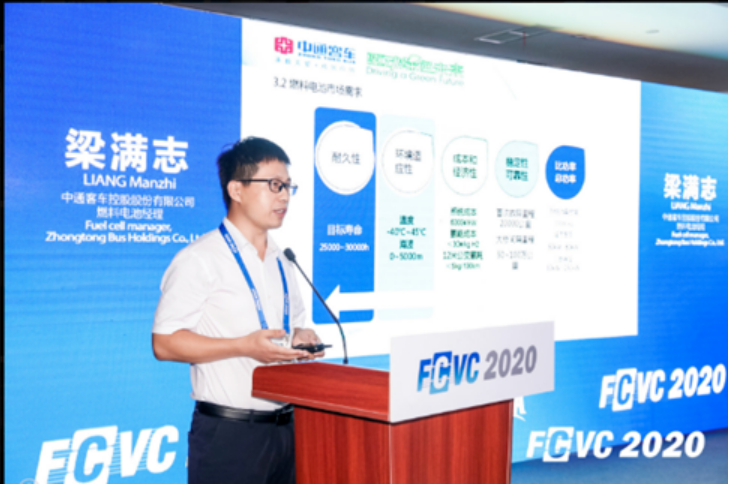
Liang Manzhi, Fuel Cell Manager, Zhongtong Bus Holding Co., Ltd.
Mr. Liang Manzhi shared ZTO's exploration and practice in the scale of fuel cell commercial vehicles.
Zhongtong has developed three series of buses, including 9 meters, 10.5 meters and 12 meters. After optimization and upgrading, the hydrogen consumption of the 12-meter car can reach 5 kg/100 kilometers.
In Mr. Liang Manzhi's view, the life of the membrane may be longer in the next 2 to 5 years. Under the dynamic conditions of the vehicle, coupled with the optimization of ZTO's control strategy and system integration, ZTO's fuel cell may be compatible with the whole system. The car reaches the same lifespan.
round table forum
The roundtable dialogue session was chaired by Tongji University professor Zhang Tong. Lu Bingbing, general manager of Shanghai JieHydrogen Technology Co., Ltd., Wei Changhe, deputy chief engineer of new energy system integration and fuel cell bus product director of Foton Motor Group, Huang Xuanfang, senior technical manager of CRRC Times Electric Vehicle Co., Ltd., China Automotive Technology Research Center Co., Ltd. Zhang Yanyi, director of the fuel cell room of the company's automobile testing institute, and Liang Manzhi, fuel cell manager of Zhongtong Bus Holding Co., Ltd., participated in the panel discussion on the topic that medium and heavy vehicles are the best path choice for fuel cell technology in the automotive field.

The application and promotion of fuel cell technology in the field of commercial vehicles has achieved remarkable results. There were more than 200 audiences at the conference. Representatives actively spoke in the discussion session and conducted in-depth discussions with the speakers on how to promote the rapid development of fuel cell commercial vehicles. comminicate.